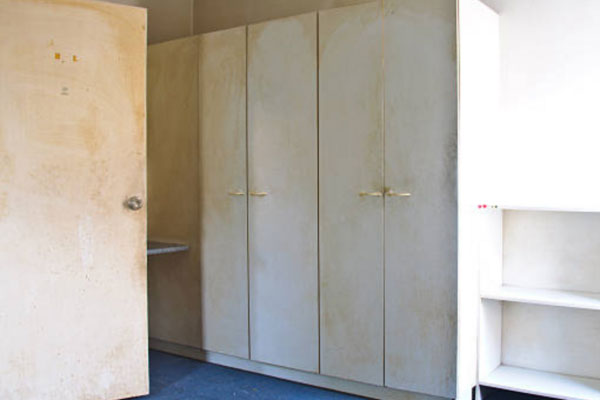In recent days, the weather in Hanoi, as well as in the northern provinces in general, is often humid. This is a typical weather pattern of the spring season in the northern region, which causes houses to be constantly damp, and clothes take longer to dry. Even though the wardrobe is closed, it can still be affected by dampness and mold.
When facing humid weather, use this method to prevent wardrobe mold:
To prevent the wardrobe from getting moldy during humid weather, you should apply the following solutions:
Close the house tightly
The first and most important way to prevent wardrobe mold during humid weather is to close all doors and windows tightly to minimize the entry of moist air into the house.
Keeping the air inside the house dry during humid days will also prevent moisture from entering the wardrobe, ensuring that the surfaces and the inside of the wardrobe remain dry, without mold or unpleasant odors.
Do not place the wardrobe against the wall
During humid days, water condensation occurs not only on the floor but also on the walls and ceilings. Therefore, when placing the wardrobe, you should leave some space between the wall and the wardrobe to prevent water from seeping into the wardrobe and creating an environment for mold and bacteria to grow. This is an important note to help prevent wardrobe mold during humid weather.

Moisture-proof the wardrobe
Before storing clothes in the wardrobe, you need to ensure that they are clean and completely dry. Do not rush to store clothes that are still damp or slightly damp in the wardrobe.
You should neatly classify clothes before storing, folding some and hanging others.
Another way to prevent wardrobe mold during humid weather is to hang a bag of dry tea leaves or coffee grounds in the corner of the wardrobe to absorb moisture. Tea leaves and coffee also have excellent deodorizing effects. You can also use moisture-absorbing bags or scented bags purchased from supermarkets.
Note that you should replace the moisture-absorbing bags every 1-2 months to ensure they work most effectively.
At the back of the wardrobe – where it is close to the wall surface, you can use newspaper or hardboard as a lining to prevent moisture from the wall from seeping into the wardrobe.
Treating a wardrobe with mold and dampness
If you have applied the above methods to prevent wardrobe mold during humid weather, but mold still appears, you need to take action.
First, take out all the clothes from the wardrobe and carefully examine each item, especially those at the bottom or in the corners of the wardrobe, to see if they have mold or dampness.
Next, take a clean, soft cloth and soak it in vinegar or lemon juice, then wipe the entire wardrobe, paying attention to wipe all compartments and wiping from the inside out. If there are many mold spots, you should use specialized cleaning solutions.
Finally, clean the wardrobe with water and a dry cloth, let it dry completely, and then put the clothes back in the wardrobe.
To prevent mold from reappearing, you should regularly check the wardrobe for any gaps and promptly handle them.
According to VTC News



































